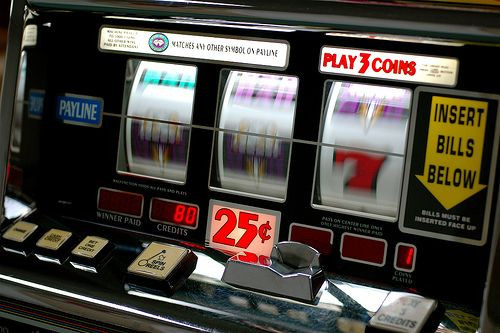Gambling Addiction Breakthrough: Drug Blocks Reward-Seeking Impulse In Rats

Through the construction of a rat casino, scientists have been able to better understand how the brain responds to “near miss” events in gambling — close-but-no-cigar losses — that most often crop up in slot machines, and encourage players to keep playing under the false assumption they’re on the brink of a big payout. The latest study has promising implications for studying gambling addictions in the future.
Pathological gambling, also known as compulsive gambling, affects roughly two million Americans (one percent), with another four to six million (two to three percent) falling into the category of problem gamblers, who only meet some of the diagnostic criteria of pathological gamblers but still see the behavior as having detrimental effects on their well-being. One of the primary channels through which these problems manifest themselves is the brain’s D4 dopamine receptor, which, among other things, controls addictive behavior, schizophrenia, Parkinson’s disease, and the range of eating disorders.
"Pathological gambling is increasingly seen as a behavioral addiction similar to drug or alcohol addiction,” Paul Cocker, lead author of the study and a postdoctoral fellow in psychology at the University of British Columbia, told Science Daily. “But we know comparatively little about how to treat problem gambling."
While D4 receptor malfunctions have been linked to numerous neurological disorders, their treatment through the receptor hasn’t yielded encouraging results. Schizophrenia drugs, in particular, showed no improvement despite a wealth of research showing a connection between the condition and the receptor.
The team of UBC researchers had more heartening effects in their mock casino. Thirty-two rats were presented with a slot machine-like device that enabled them to push a lever with their paw and gamble for sugar pellets. Three flashing lights indicated a win. Anything else — two lights, one light, or no lights — indicated a loss. Winning rats could push a second lever to “cash out” for 10 pellets; if they pushed the lever on a loss, they suffered a 10-second time out penalty. They also had the ability to “roll again,” which carried no penalty or prize.
Interestingly, the researchers observed a tendency for the rats to press the “cash out” lever most often when only two lights had flashed. The team took this as a rough equivalent to the “near miss” effect in humans, where flashing lights signal to our brains that we’ve won and encourage us to keep gambling on a false high.
Rats then received a drug, which blocked the D4 receptor in their brains. Suddenly, they showed a reduced interest in cashing out after a two-light loss. The near miss effect had worn off.
The drugs given to the rats is still a long distance away from being considered a pharmaceutical alternative for humans, but Cocker and his colleagues believe the study could have breakthrough potential in researching, and treating, gambling addictions sometime in the future. Gambling addictions often arise in people who fail to reasonably assess the losses they’ve incurred. Active retardation of the D4 receptor may hold the key to jumpstarting that awareness.
"More work is needed, but these findings offer new hope for the treatment of gambling addiction, which is a growing public health concern,” Cocker said. “Our study is the first to show that by blocking these receptors we might be able to reduce the rewarding aspects of near-misses that appear to be important in gambling."
Source: Cocker P, Le Foll B, Rogers R, Winstanley C. A Selective Role for Dopamine D4 Receptors in Modulating Reward Expectancy in a Rodent Slot Machine Task. Biological Psychiatry. 2013.



























